American 155-mm self-propelled howitzer M109
In the middle of the 1950, self-propelled artillery systems in the field artillery of the United States took a firm place. However, the US participation in numerous military conflicts unleashed throughout the world and the emergence of a nuclear weapons the socialist countries were the reason for putting forward new requirements for self-propelled guns. For a quick transfer of self-propelled guns to anywhere in the world by air, they had to have a small mass and dimensions. To protect the crew of the self-propelled guns from the damaging factors of nuclear weapons, the armor of the vehicles had to be complete. In addition, they were equipped with filtering units. In the list of requirements, not the last place was occupied by good cross-country ability through the use of special. landing gear, swimming through water obstacles and increasing the sector of horizontal fire through the use of a rotating turret. During this period, the US Army was armed with the 105-mm self-propelled guns M52 and 155-mm self-propelled guns M44, created on the basis of tank M41. Self-propelled artillery mounts did not meet the new requirements and had some drawbacks, the main of which were: limited angle of fire, heavy weight and insignificant range.
To eliminate the shortcomings inherent in the M44 and M52, in 1952 they began to create a self-propelled howitzer T195 caliber 110 mm. It was decided to use the gun turret and the T195 hull as the basis for a self-propelled gun equipped with a 156mm howitzer. The draft of the new howitzer was presented in August 1954, however, it did not receive the approval of the customer. In 1956, for unification within NATO, it was decided to stick to the caliber of 155 millimeters, and in 1959 the first prototype was completed, which was given the designation T196. ACS T196 was sent to Fort Knox to undergo military tests.
Based on the results of these tests, it was decided that in order to increase the operating range, all American armored vehicles would be equipped with diesel engines. In addition, a number of changes were made to the design of the hull, turret and chassis. Given the new equipment, the model was assigned the designation T196E1. In 1961, it was accepted into service as the M109 SP howitzer. The first production vehicles were produced at the end of 1962 at the Cleveland Army Tank Plant under the leadership of Cadillac Motor Car Division, later Chrysler. In total, about 2500 guns were built at the Chrysler plant. In the 1970s, the production of the M109 family was transferred to Bowen McLaughlin-York (today United Defense).
The hull and turret of the M109 self-propelled guns are made of rolled aluminum armor, which provides protection against fragments of field artillery shells, small arms fire and light radiation from a nuclear explosion. The stern and sides of the hull were installed vertically, and the upper front plate at a significant angle. The roof of the hull is horizontal. A closed tower of circular rotation was installed at the stern of the self-propelled gun, having an almost semicircular frontal sheet. Rectangular hatches opening backwards are made in the sides of the tower.
In the M109 self-propelled howitzer, a layout with a front-mounted engine-transmission group was adopted. In the aft part of the hull housed a tower of circular rotation with a 155-millimeter howitzer. The driver's seat is located in front of the self-propelled gun on the left, the engine compartment is on the right. The tower is located at the back. Suspension of the self-propelled howitzer M109 rod. There are 7 rollers on each side, a guide drum in the rear and a transport drum in the front. There are no reverse rolls. The standard equipment includes infrared leading lights, as well as amphibious equipment, which makes it possible to independently move self-propelled guns through slow-flowing rivers. In the stern there was a double hatch for loading ammunition. Crew entry / exit was carried out through hatches in the rear of the tower and side walls, as well as through hatches in the roof of the tower.
Detroit diesel diesel engine 8V-T71.
The M109 self-propelled howitzer crew consists of six people: a driver, a gun commander, a gunner and his assistant, as well as two calculation numbers.
The main gun is a 155 mm M126 howitzer with a 23 caliber barrel. The gun is mounted on an M127 mount equipped with a muzzle brake and ejector. The vertical guidance angle is -3 ... + 75 degrees, horizontal - 360 degrees. The howitzer is equipped with hydropneumatic recoil devices. The main guidance drive is hydraulic, the auxiliary drive is manual. The gun has a large exhaust device, a muzzle brake and a threaded Welm breech. The supply of propellant charges and capsule tubes is carried out manually. The latter are inserted into the shutter after a projectile with a propellant charge has already been placed in the charging chamber. The maximum rate of fire is 6 rounds per minute. Auxiliary armament is a 12,7 mm M2HB machine gun mounted above the commander's hatch in the turret on the right. Machine gun ammunition - 500 rounds.
these munitions are used for self-propelled howitzer M109: M712 «Copperhead" (guided missile), M107 and M795 (high-explosive shells), M718 / M741, M692, M483A1 and M449A1 (cluster bombs), M549 (high-explosive rocket-assisted projectile ), M485 and M818 (lighting projectiles), M825 (smoke projectile), M804 (practical projectile). Ammunition - 28 shots.
The M109 ACS is equipped with three МNNUMX periscopes, М45 periscope, МХNUMXС optical sight with ХХNUMX magnification, М27 panoramic optical sight with МХNUMX magnification and МХNUMXА118 and МХNUMX artillery quadrants. Also for night driving there are night vision devices. Some machines are equipped with a system of protection against weapons of mass destruction.
The M109 self-propelled howitzer can overcome water obstacles by swimming: the self-propelled gun is kept on the water using a special set of watercraft, which consists of 3 wave-reflecting shields and 6 rubberized inflatable containers. Movement on the water is carried out by rewinding the tracks. The M109 self-propelled guns are capable of firing from the water, but only to produce a "noise effect" since horizontal guidance fails, and turning on the move leads to a loss of accuracy.
One of the reasons for the durability of the M109 self-propelled howitzer is that the base chassis of the machine is amenable to modernization and can easily “accept” long-barreled artillery with a greater range of fire.
The M109 ACS family includes the following modifications:
M109A1 - Adopted in 1973 year. The main difference from the base model is the increased length of the barrel, reinforced suspension and advanced targeting drives. You can use M864 cluster shells with bottom gas generator.
M109A2 - adopted in the 1979 year. Changed design recoil devices and rammer. Ammunition increased by 22 shot.
The M109A3 is an upgraded version of the M109A1. The gun machine has been replaced. It has an improved driver's dashboard, a system for removing air from the fuel system, a system for monitoring the state of the ammunition rack, a recoil brake, a knurler and torsion shafts. The maximum firing range for an active-rocket projectile has been increased to 24 km, for a high-explosive fragmentation projectile - up to 18 km.
The modification M109A4 is equipped with a system of protection against weapons of mass destruction. In the power plant made some changes, horizontal guidance mechanisms improved.
M109A5 - equipped with an M284 gun with a barrel length 39 calibers on the machine M182. The maximum firing range is 30 km. Upon request, it is possible to install an automated fire control system and a GPS system.
M109A6 “Paladin” (Paladin) - modification developed in the framework of the HIP program. Adopted in 1992 year. Installed a new tower with improved armor protection and the inner lining of Kevlar. The M284 cannon is mounted on the M182A1. Replaced radio station.
The M109A6 ACS is equipped with a fire control system, a navigation system and an onboard ballistic computer that provide automatic guidance of the weapon. There is a receiver of the space radio navigation system NAVSTAR.
In 1983, in Germany, a modernized version of the M109A3G was developed. Production started in 1985. It has a new gun with a barrel from the FH70 “Rheinmetall” howitzer. It features more advanced anti-recoil devices, a wedge gate and a reinforced warhead introduced into the ammunition (which made it possible to increase the firing range to 18 km, and the rate of fire - to 6 shots). By changing the placement of ammunition, the number of shots increased to 34 pcs. Also, new, West German observation devices, sights, tracks, communications equipment, smoke grenade launchers and MG.3 anti-aircraft machine gun 7,62 mm were installed on the machine.
Modernization M109A3GN was developed in 1988 year and was made for the army of Norway in 1988 — 1990. Installed new trunks company "Rhinemetall", which allowed to increase the range of fire.
M109L is a modernized version of a self-propelled howitzer made in Italy.
M109A6 PIM is an upgraded version of the M109A6 "Paladin". The main goal of the upgrade was the extension of the life span of the ACS by 30-40.
M109A6 and improving their combat performance. The modernized self-propelled howitzer has a digital fire control system and an advanced semi-automatic loading system. In addition, the hydraulic tool control systems were replaced with electric drives. The base chassis replaced the improved one with the transmission and suspension elements of the BMP M2 Bradley. The 440 hp Detroit Diesel engine was replaced by the M2 Bradley IFV (600 hp Cummins V903). The US military plans to upgrade to a modification of the PIM 580 M109A6 from 975.
The M109 self-propelled howitzer enters the US Army in the amount of 54 pieces. per one mechanized or tank division (3 divisions of 18 self-propelled guns, in the division - 3 batteries of 6 vehicles). In addition to the Marine Corps and the US Army, M109 self-propelled guns were delivered to Austria (189 vehicles of modifications M109A2, M109A3, M109A5Ö - as of 2007), Belgium (24 self-propelled guns M109), Brazil (37 M109A3), Germany (499 M109A3G), Greece (197 M109A1B, M109A2, M109A3GEA1, M109A5), Denmark (76 M109A3DK), Egypt (367 M109A2, M109A2, M109A3), Israel (350 M109A1), Jordan (253 M109A1, M109A2), Iran (180 M109), Spain (112 M 109A2, M109A5), Italy (260 M109G, M109L), Republic of Korea (1040 M109A2), Kuwait (23 M109), Libya (14 M109), Morocco (44 M109A1, M109A1B), Netherlands (120 M109A3), Norway (126 M109A3GN), UAE (85 M109A3), Pakistan (200 M109A2), Peru (12 M109A2), Portugal (20 M109A2, M109A5), Saudi Arabia (110 M109A1B, M109A2), Thailand (20 M109A2), Republic of China (225 M109A2, M109A5), Switzerland (224 M109U).
The M109 self-propelled howitzer was used in many conflicts in the Middle East (used by Israel and Iran) and the Far East (by the United States in Kampuchea and Vietnam).
Performance characteristics:
Combat weight - 23,8 tons;
Body length - 6114 mm;
Length with a gun forward - 6614 mm;
Case width - 3150 mm;
Height - mm 3279;
Clearance - 450 mm;
Crew - 4-6 man (depending on version);
Type of armor - aluminum rolled
The forehead of the body (top) - 32 mm / 75 °;
The forehead of the body (middle) - 32 mm / 19 °;
The forehead of the body (bottom) - 32 mm / 60 °;
Board and hull feed - 32 mm / 0 °;
Bottom - 32 mm;
The roof of the case - mm 32;
The forehead and side of the tower - 32 mm / 22 °;
Tower feed - 32 mm / 0 °;
The roof of the tower - 32 mm;
Type of gun - howitzer;
Make and caliber of the gun - M126, 155 mm;
Barrel length - 23,4 calibers;
Ammunition gun - 28 shots;
Vertical guidance angles - from −3 to + 75 degrees;
Firing range - 19,3 km (with an active-projectile);
Sights - M42 (periscopic), M118C (telescopic), M117 (panoramic periscopic);
Machine gun - M2HB caliber 12,7 mm;
Engine - diesel, V-shaped, 8-cylinder, liquid cooled;
Engine power - 405 l. with.;
Highway speed - 56 km / h;
Cruising on the highway - 350 km;
Specific power - 15,5 l. s./t;
Ground pressure is 0,78 kg / cm²;
Overcoming rise - 30 grad .;
Breakable wall - 0,55 m;
Overcoming ditch - 1,85 m;
Passable ford - 1,05 m, with optional equipment floats.
Based on materials:
http://zonawar.ru
http://www.thetankmaster.com
http://detavlad.ru
http://voenteh.com
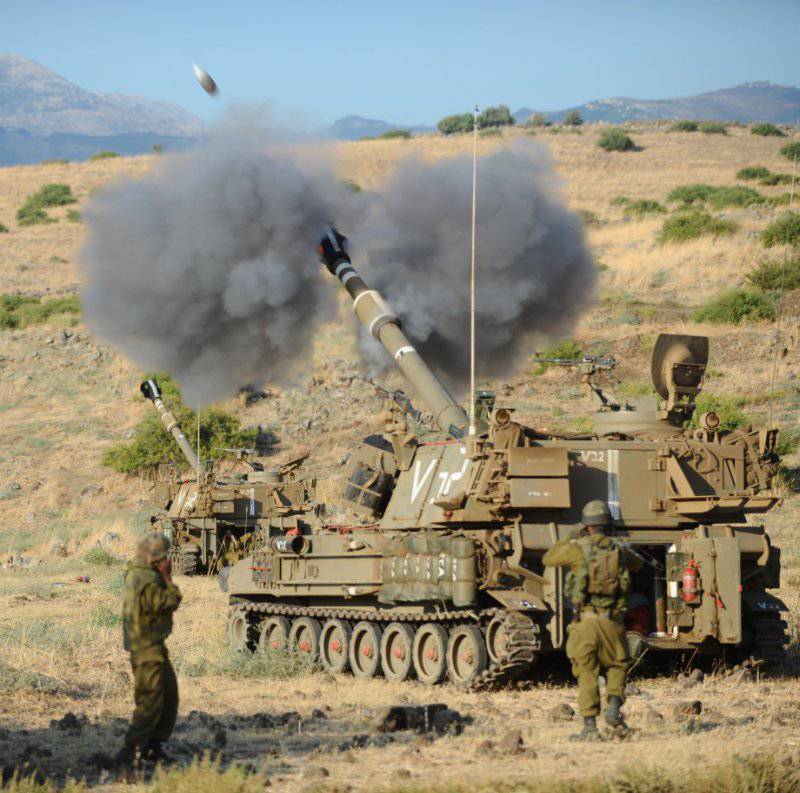
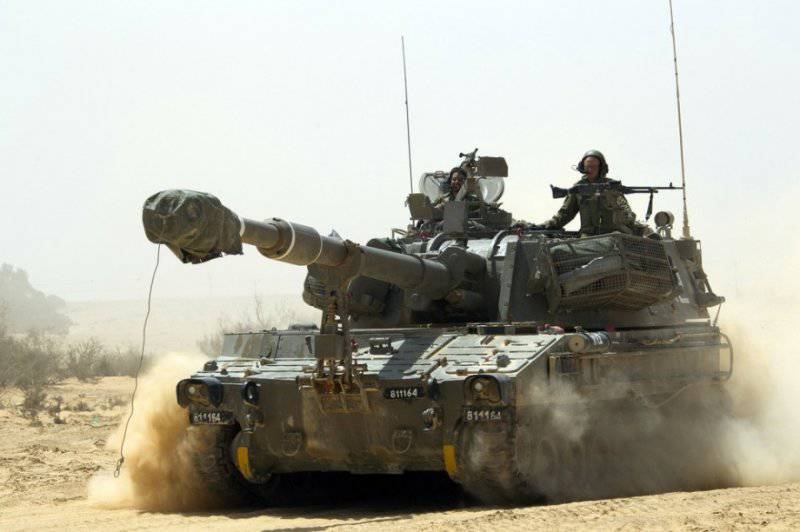
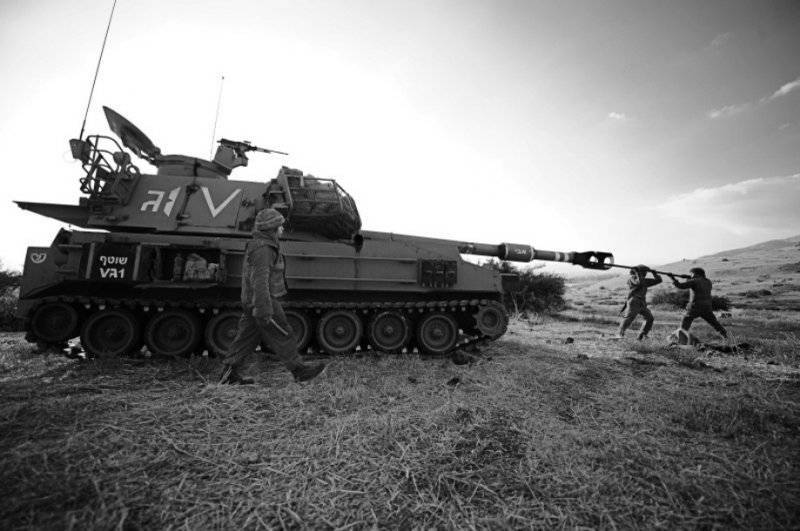
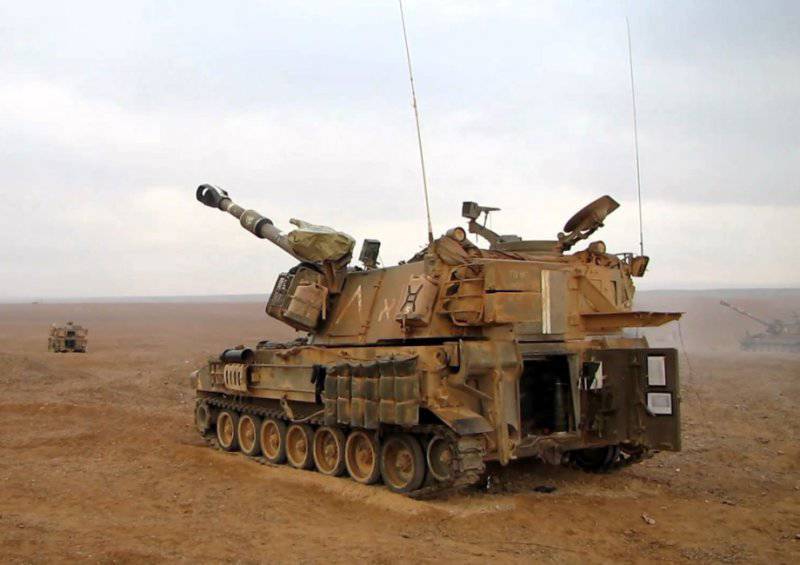
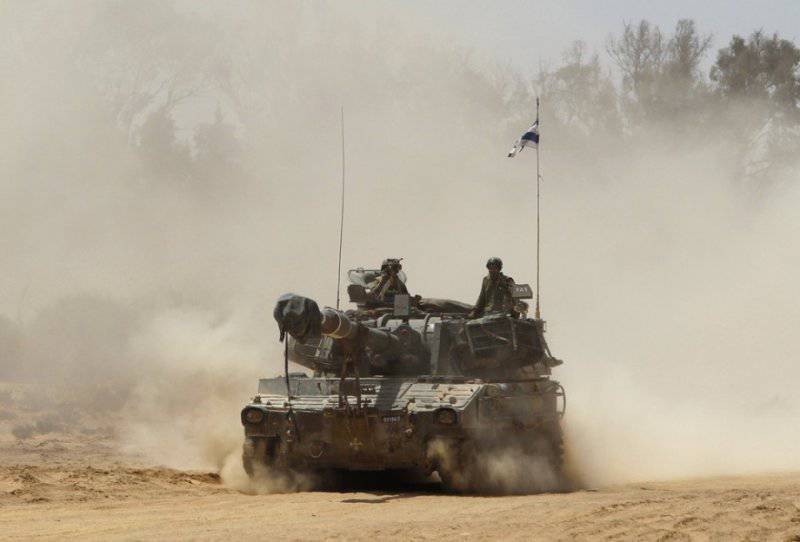
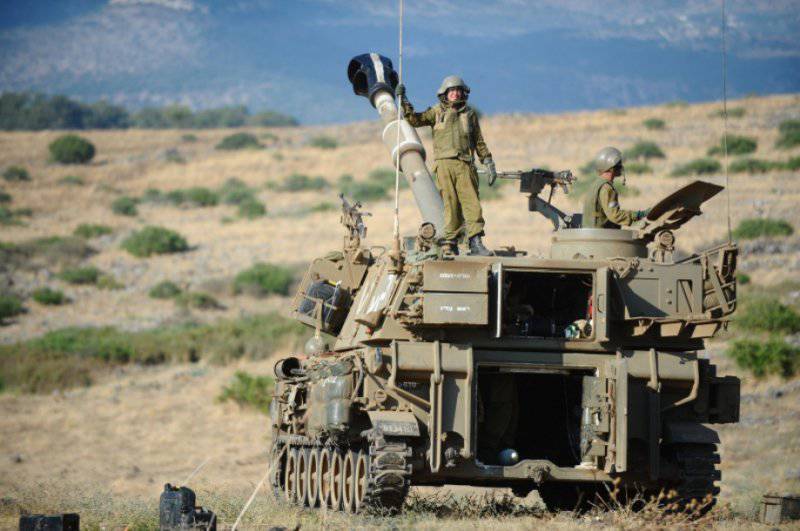
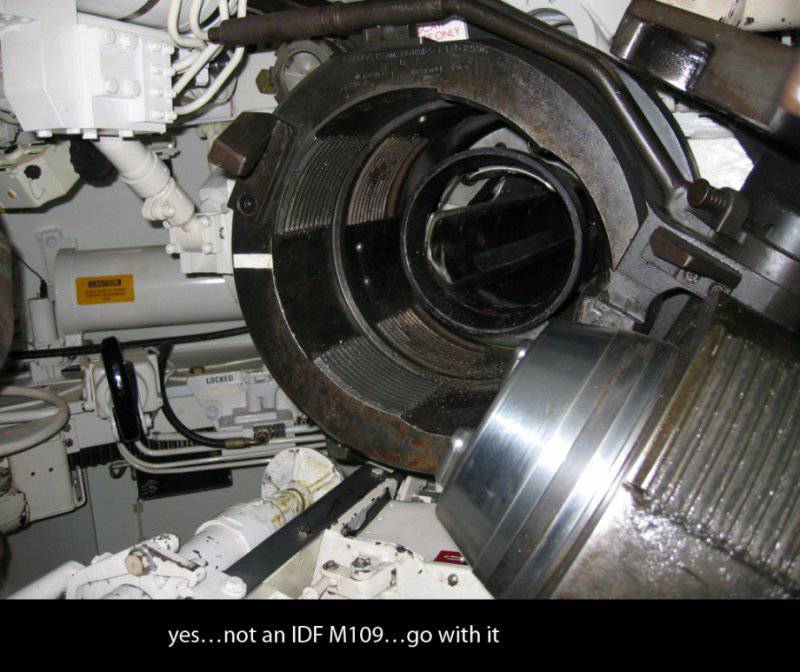
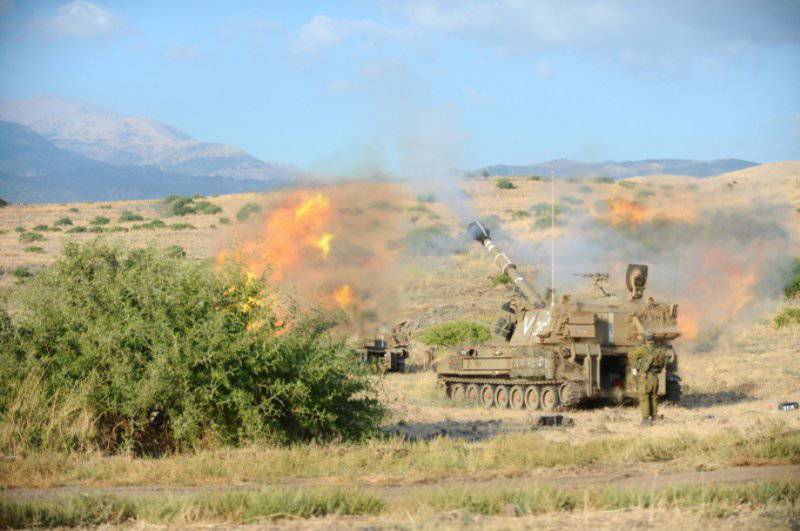
Information